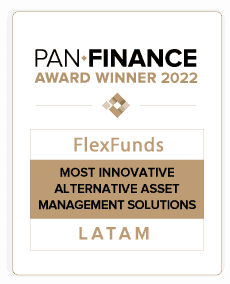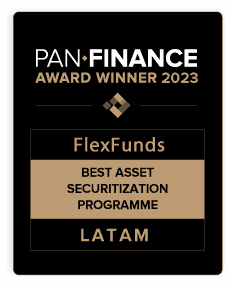- In this article, Matthew Cahill, a partner at Dentons Ireland, explained how multi-issuance securitization vehicles for collective investment compare to other structures.
- The information is aimed at asset managers and investment advisors seeking to understand the advantages and disadvantages of a multi-issuance securitization structure.
- At FlexFunds, we offer an asset securitization program to issue exchange-traded products (ETPs) that can enhance liquidity for certain collective investment vehicles. For more information, feel free to contact our team of experts.
Asset securitization offers multiple benefits, such as improved liquidity, risk diversification, and access to new sources of financing for originators of underlying assets.
For this reason, as highlighted in the II Annual Report of the Asset Securitization Sector 2024-2025, developed by FlexFunds in collaboration with Funds Society, it is an attractive mechanism for collective investment fund managers.
Within this system, multi-issuance securitization vehicles stand out, offering certain benefits compared to more traditional issuance structures:
Cost efficiency
According to Matthew Cahill, one advantage of multi-issuance securitization vehicles for collective investment is that they allow for greater economies of scale and the sharing of transaction costs.
Additionally, each issuance can replicate the economy of a small fund managed with the income invested under the portfolio manager’s direction in permitted investments.
Versatility
Unlike a single-transaction special purpose vehicle (SPV), a multi-issuance securitization vehicle will issue multiple “series” of debt securities, with each series structured to be separate from the others.
“The segregation of assets between series is critical and is achieved by contract in jurisdictions such as Ireland (using “limited recourse” and “non-petition language”) and can be achieved by “cell” legislation in jurisdictions such as Luxembourg.,” Cahill explained.
However, multi-issuance securitization vehicles used for collective investment are not without their disadvantages:
Increased security required
According to Cahill, it is more important to secure the underlying assets in a multi-issuance structure than in an independent SPV structure to ensure that the assets of one series are not available to unexpected creditors of another series.
Faulty tax structuring
Additionally, for the Irish tax bill to be minimal, Irish SPVs must meet specific conditions. If any of these conditions are not met, an Irish SPV could be subject to a significant tax bill, which could result in investors not receiving the expected returns from their investments.
Unfortunately, the risks are higher for multi-issuance structures than for independent SPV transactions.
In any case, a multi-issuance securitization structure shares several similarities with other collective investment securitization vehicles:
Investor suitability
Regardless of the structure used, the same restrictions on sales and investor suitability requirements apply. Investors may have restrictions on the types of assets they can hold, which may determine the type of structure used.
Regulation
Meanwhile, funds and SPVs operate under different regulatory frameworks, which are subject to change. This is especially true in the EU, where there is a constant wave of regulations aimed at preventing the misuse of structured finance vehicles or the attainment of unfair tax advantages.
Therefore, a structure that works today may not necessarily work in the future, making it essential to always seek updated legal, tax, and regulatory advice.
Insufficient information
Cahill also noted that although many transactions are listed on the Vienna Stock Exchange to allow the SPV to pay securities holders without withholding tax, this does not guarantee that investors receive all the material information needed to make an informed assessment of the investment’s risks and rewards.
“One reason for this is that the Vienna Stock Exchange listing rules do not require detailed disclosure. Transactions listed on Euronext Dublin or the Luxembourg Stock Exchange provide better disclosure for investors. Additionally, when fund shares are repackaged, the underlying fund documentation may restrict the disclosure of information related to the fund,” the expert clarified.
Lack of effective collateral
An SPV typically commits to creating security over the underlying assets of a series to ensure they are protected from the claims of other potential creditors and can be liquidated in case of enforcement.
However, there may be instances where the security is not properly perfected or created over the SPV’s assets intended to secure a specific series. This may be due to the assets being in a jurisdiction where creating effective security is problematic or difficult to achieve.
The II Annual Report of the Asset Securitization Sector 2024-2025 can be downloaded easily and for free.
Disclaimer Dentons:
This above is a general overview, not designed to provide legal advice and you should not take, or refrain from taking, action based on its content. The above should not be relied on by you for any situation. Dentons Ireland LLP does not owe or assume a duty of care or responsibility to you. No Dentons entity, partner, employee, consultant or affiliated entity is liable to you for any loss or damage resulting, either directly or indirectly, from the above.







